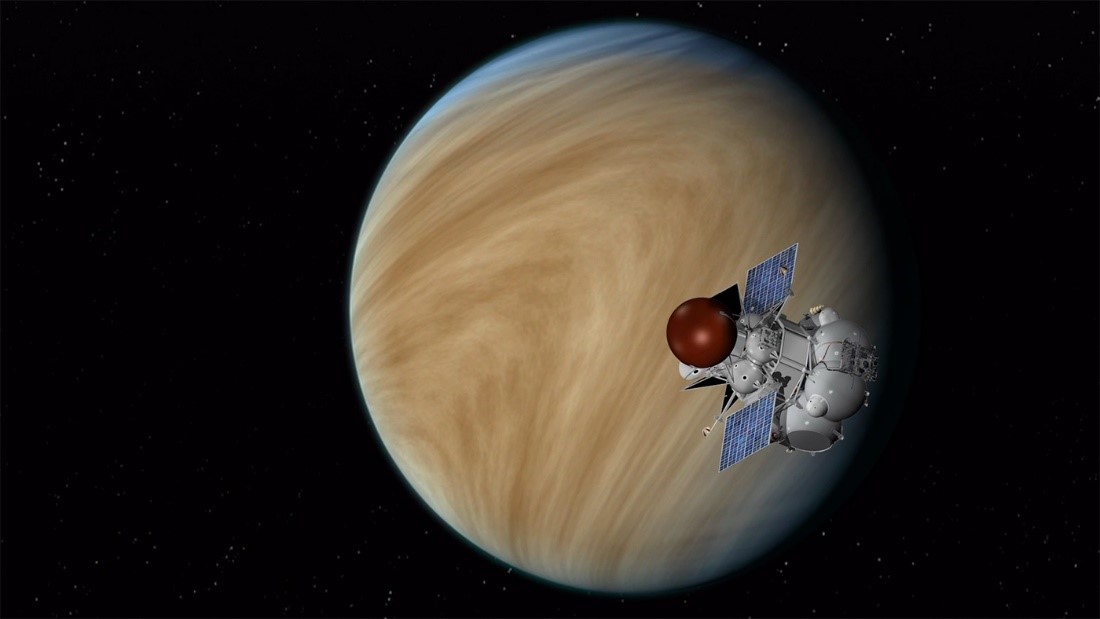Shukrayaan Mission
2020 NOV 25
Mains >
Science and Technology > Space technology > Global research projects and India

IN NEWS:
- The Indian Space Research Organisation (ISRO) has short-listed 20 space-based experiment proposals for its proposed Venus orbiter mission 'Shukrayaan'.
SHUKRAYAAN-1:
- Shukrayaan-1 is a proposed orbiter to Venus by the ISRO.
- The mission’s primary objectives are to map Venus’ surface and subsurface while studying the planet’s atmospheric chemistry and interaction with the solar wind.
- In its current configuration, the orbiter weighs about 2,500 kilograms and will carry science payloads like synthetic aperture radar. Russia, France, Sweden and Germany will have instruments onboard.
- ISRO aims to launch the orbiter in late 2024. It aims to study the planet for more than four years.
- Shukrayaan is currently slated to launch on India’s GSLV Mk II rocket. However, ISRO is also evaluating the possible use of the more powerful GSLV Mk III rocket, which would allow Shukrayaan to carry more instruments or fuel.
VENUS:
- Venus is the second planet from the Sun. It is named after the Roman goddess of love and beauty.
- Venus orbit the Sun every 224.7 Earth days. It spins in the opposite direction of Earth, with a rotation period of 243 Earth days, making it the longest among the planets in our Solar System.
- Similar in size and structure to Earth, Venus has been called Earth's twin. However, there are radical differences between the two worlds.
- Venus has a dense, toxic atmosphere filled with more than 96% carbon dioxide and it is perpetually shrouded in thick, yellowish clouds of mostly sulfuric acid that trap heat. As a result, Venus has the hottest surface of any planet in the Solar System.
- Venus has crushing air pressure at its surface – more than 90 times that of Earth
- Venus' solid surface is a volcanic landscape covered with extensive plains featuring high volcanic mountains and vast ridged plateaus.
- It is the second-brightest natural object in Earth's night sky after the Moon. But Venus does not have any moons of its own.
- Venus was the first planet to be explored by a spacecraft – NASA’s Mariner 2. Since then, more than 40 spacecraft have explored Venus. Eg: Magellan mission of ‘90s, which mapped the planet's surface.
WHY EXPLORE VENUS?
- Presence of life: In September 2020, scientists announced that they have detected phosphine molecules in Venus, which could be a biosignature of microbial life. The idea that Venus used to be habitable like Mars warrants further exploration and can have profound scientific implications.
- Presence of water in the past: Past missions to Venus have observed granite-like rocks on the surface, which require abundant water to form.
- Understand earth’s evolutionary history: Studying Venus helps scientists get answers to questions like how Venus transformed from a potentially habitable world to its current state, which can provide insights into what makes Earth a habitable planet. For Eg: Japan’s Akatsuki spacecraft discovered a giant stationary wave in Venus’ atmosphere, (the largest of its kind in the solar system) which can provide insights into the evolution of atmosphere.
- Predict trends in earth’s climate change: Venus helps scientists model Earth’s climate, and serves as a cautionary tale on how dramatically a planet’s climate can change.
- Develop comparative planetary studies: Scientists use Venus as a reference to understand how Earth-sized planets around other stars evolve and what conditions might exist there. For eg: The Magellan mission found no sign of plate tectonics on Venus, which means that volcanoes there must work differently than on Earth.
- Aid future missions: Several scientists and engineers view Venus as a crucial part of manned interplanetary missions. For Eg: They propose that a flight to/from Mars can happen more quickly and cheaply if it involves using a gravity assisted slingshot past Venus.
CHALLENGES AHEAD:
- Venus is a hostile planet to study: Its thick clouds make research from an orbiter difficult, while heat, high pressure, and sulfuric acid droplets make studies on the surface a technological nightmare. Hence, highly sophisticated and sensitive technologies are needed for the orbiter.
- Longevity of orbiter: As per NASA, spacecrafts don't last long around Venus as its high temperature overheats electronics in a very short time span. Hence, ISRO has to develop new heat resistant materials and electronics for the mission to succeed.
- Limited collaboration opportunities: Of the more than 40 Venus missions so far, roughly half have failed. Only three spacecraft have orbited Venus in the past 30 years. Hence, India will have to design and develop everything indigenously from the scratch.
CONCLUSION:
- ISRO’s success in the Mangalyaan and Chandrayaan missions provide an impeccable track record mission for India in interplanetary missions. Also, the Aditya L1 mission will provide an ideal platform for India to develop heat resistant instruments and craft technologies. These factors provide an ideal environment for India to develop upon the Venus mission.
- Space agencies around the world are showing renewed interest in the second planet from the sun. NASA selected two Venus missions earlier this year for further consideration for launch opportunities in 2025 and 2028. The European Space Agency is considering a Venus orbiter mission called EnVision. Hence, India’s entry into this foray is at the opportune time.
PRACTICE QUESTION:
Q. How will the Venus orbiter Mission of ISRO help to understand the origin and evolution of Earth-like planets?
